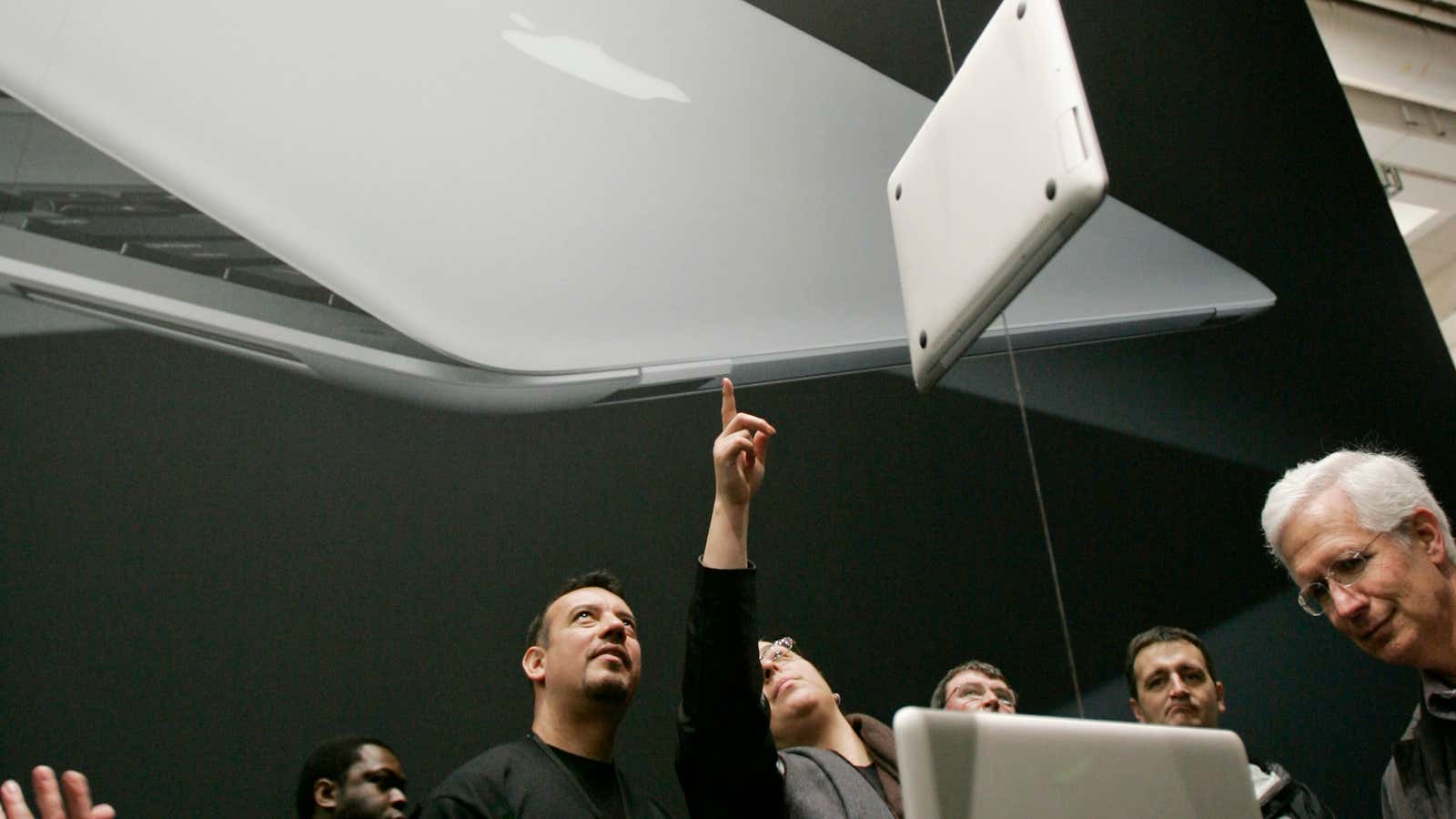Intel has revealed more about its newest chip technology, known as Broadwell, which will produce chips that require much less power to perform the same tasks. The new chips promise to be smaller and lighter as well; the chip’s basic building block is 14 nanometers, compared with the 22 nanometers in the current generation of chips, known as Haswell chips.
Broadwell-based chips eventually will be used in tablets and smartphones—high-growth markets where Intel has largely been left behind by competing chip manufacturers.
Because Intel’s new chip is so small—25% smaller than its predecessor—and requires substantially less power, it may allow for the creation of tablets and other devices without the whirr and thickness of the cooling fans currently used to keep chips from overheating. That’s not a guarantee, but it’s the first time it’s been a serious design possibility.
Running with less energy may seem like a minor thing, but it’s everything for mobile devices—which are basically giant batteries inside pretty cases, with a few other components. It’s also a broadside against a major Intel competitor, ARM Holdings. ARM chips are cheap to make and don’t require much power—enabling thinner, lighter devices with smaller batteries. They’re used in iPhones, iPads, Androids, Windows phones, and some Windows tablets.
Some have speculated that Apple could even switch to ARM chips from Intel’s for its Mac lineup. Broadwell Core M processors, the chips that Intel focused on during its presentation yesterday on the new technology, probably won’t be found in Apple’s high-end MacBook Pro lineup. But it’s rumored that they soon could figure into the lighter-weight, less expensive MacBook Air. (Imagine a redesigned MacBook Air that more closely resembles an iPad in thinness.)
The first Broadwell Core M chips will be available in systems by the end of this year.
The full slide deck accompanying the Intel presentation can be browsed through here:
